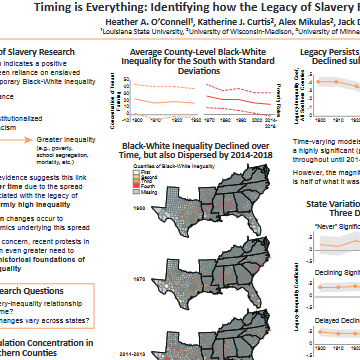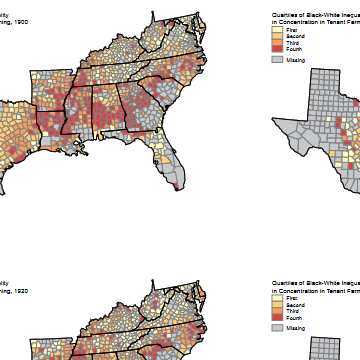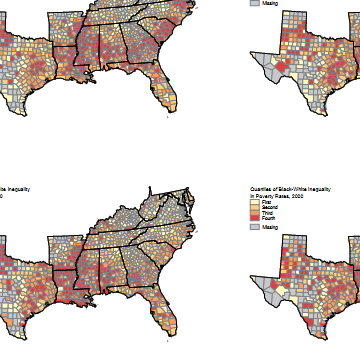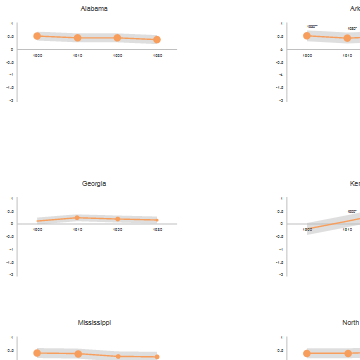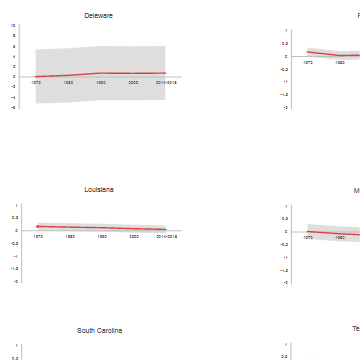About the Project
Despite the persistence of relationships between historical racial violence and White advantage/Black disadvantage in the United States, research also indicates that the slavery-inequality relationship has changed over time. In our work, we seek to understand the nature of this changing relationship.
In our most recent research, we employ panel data for southern counties spanning 1900 to 2010 to examine changes in the magnitude of the slavery-inequality relationship using Integrated Nested Laplace Approximation (INLA) models that account for spatial and temporal autocorrelation simultaneously. These results complement existing efforts to understand the historical foundations of Black-White inequality by providing guidance necessary to identify intervening mechanisms and the ways in which they affect the legacy of slavery.
Support for our research comes from the University of Wisconsin-Madison Center for Demography and Ecology center grant (P2C HD047873) and training grant (T32 HD007014), the Minnesota Population Center grant (P2C HD041023), and the Wisconsin Agricultural Experiment Station.
People
Publications
- Heather A. O'Connell, Katherine J. Curtis, and Jack DeWaard. 2020. "Population Change and the Persistence of the Legacy of Slavery." Social Science Research 87(2020): 102413.
- Katherine J. Curtis, Junho Lee, Heather A. O'Connell, and Jun Zhu. 2019. "The Spatial Distribution of Poverty and the Long Reach of the Industrial Makeup of Places: New Evidence on Spatial Temporal Regimes." Rural Sociology 84(1): 28-65.
- Katherine J. Curtis and Heather A. O'Connell. 2017. "Historical Racial Contexts and Contemporary Spatial Differences in Racial Inequality." Spatial Demography 5(2): 73-97.
- Heather A. O'Connell and Robert L. Reece. 2018. "Quantitative Studies of Place and Spatial Regression Analysis: A Study of the Legacy of Slavery in the U.S. South." SAGE Research Methods Cases.10.4135/9781526441164
- Heather A. O'Connell. 2012. "The Impact of Slavery on Racial Inequality in Poverty in the Contemporary US South." Social Forces 90(3): 713-734.
